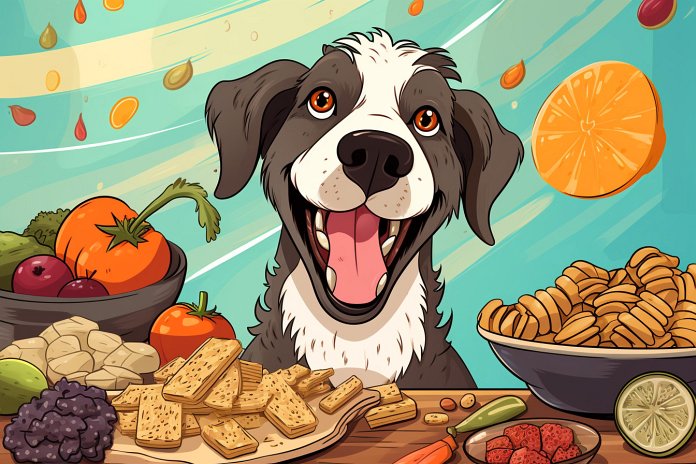
Gluten has become a big topic in the United States recently, with approximately 18 million Americans having non-Celiac gluten sensitivity and 3 million having Celiac Disease. This has increased awareness of gluten and the need for gluten-free options. However, mislabels can occur, making it difficult to know whether certain products contain gluten. Can our dogs help us in these situations? Yes! Scroll down to learn more.
Signs Your Dog Can Sniff Out Gluten
Dogs have a sense of smell that is far superior to ours. They can smell about 1 million times better than humans! Because of this, we have trained dogs to detect various things, including illnesses, drugs, and now gluten. However, dogs need training to learn what exactly to sniff out and how to indicate they have found it. The most common way is to have them sit and raise their paw when something contains gluten. Other signs include alertness, sniffing, ears back, and paw raised.
History of Dogs and Scent Detection
Dogs have a long history of helping us with their sense of smell. They were trained to detect German mines in the 1940s and illegal substances in the 1970s. Private companies also started training dogs for scent detection, including gluten. With the increasing demand for gluten-sniffing dogs, their use will continue to grow.
Science Behind Dogs Sniffing Out Gluten
Dogs have over 220 million cells that help them smell, compared to our 5 million. They also have a larger sense-control area in their brain, allowing for better scent detection and discrimination. This incredible sense of smell enables dogs to detect gluten in our food and household products.
Training Your Dog to Detect Gluten
Training your dog to detect gluten involves teaching them obedience and constructing a gluten sense wheel. This wheel helps them detect different levels of gluten, starting from small traces up to the full protein. Establish a signal with your dog, such as a raised paw, to indicate gluten detection. Reward them with treats when they sniff out gluten. Other exercises, like hiding or burying gluten, can also be done for reinforcement. Continuous training is important to keep their sense of smell sharp.
“A furry friend’s nose knows best – training our pups to sniff out gluten”

Tips & Things to Know
1️⃣ Gluten can be found in unexpected places, such as shampoo, lotion, and makeup. It’s important to be aware of hidden sources of gluten to avoid reactions.
2️⃣ Dogs have an exceptional sense of smell and can be trained to detect gluten. They can be a helpful tool in identifying gluten-containing products and keeping you safe.
3️⃣ Training your dog to detect gluten involves obedience training and gradually introducing gluten levels. Positive reinforcement, such as treats, can be used to encourage your dog’s ability to detect gluten.
Frequently Asked Questions, Answered ✅
1. How can dogs help with detecting gluten?
– Dogs have a strong sense of smell and can be trained to sniff out gluten in various products, helping individuals with gluten sensitivities avoid reactions.
2. What are some signs that a dog has detected gluten?
– Signs that a dog has detected gluten can include alertness, sniffing behavior, ears back, raised paw, focused behavior, exhibiting a trained alert, and pawing.
3. What is the history of dogs being trained for scent detection?
– Dogs have a long history of being trained for scent detection, starting with bomb-sniffing dogs in the 1940s. They have also been trained to detect illegal substances, allergens and diseases, and now gluten.
4. How does a dog’s sense of smell compare to humans?
– Dogs have over 220 million scent-detecting cells, compared to our 5 million. They also have a larger sense-control area in their brain, allowing them to detect and distinguish smells more effectively.
5. How can you train your dog to detect gluten?
– Training your dog to detect gluten involves teaching them obedience and then constructing a gluten sense wheel to expose them to different levels of gluten. Positive reinforcement, such as treats, is used to reward the dog for correctly detecting gluten.